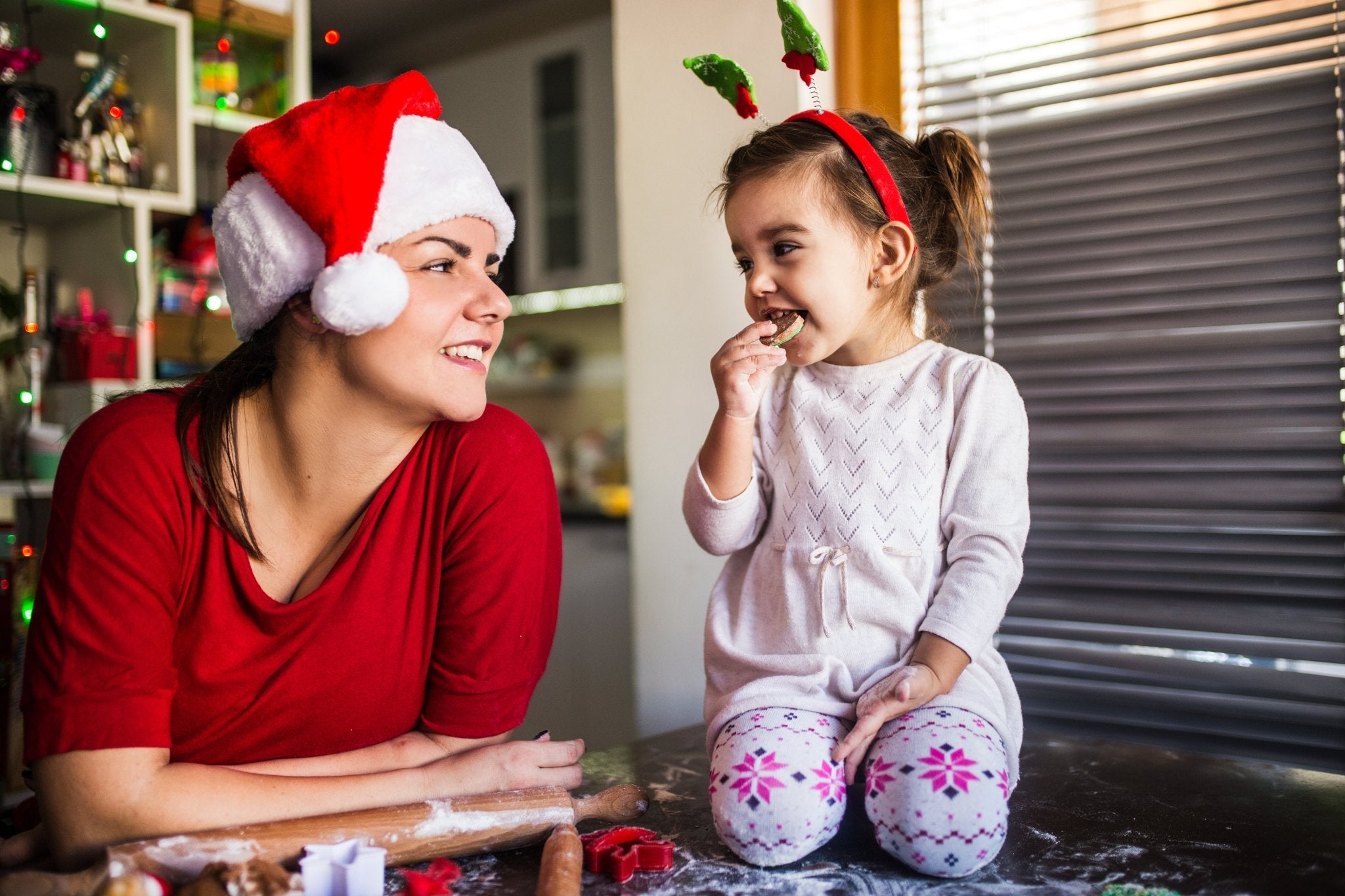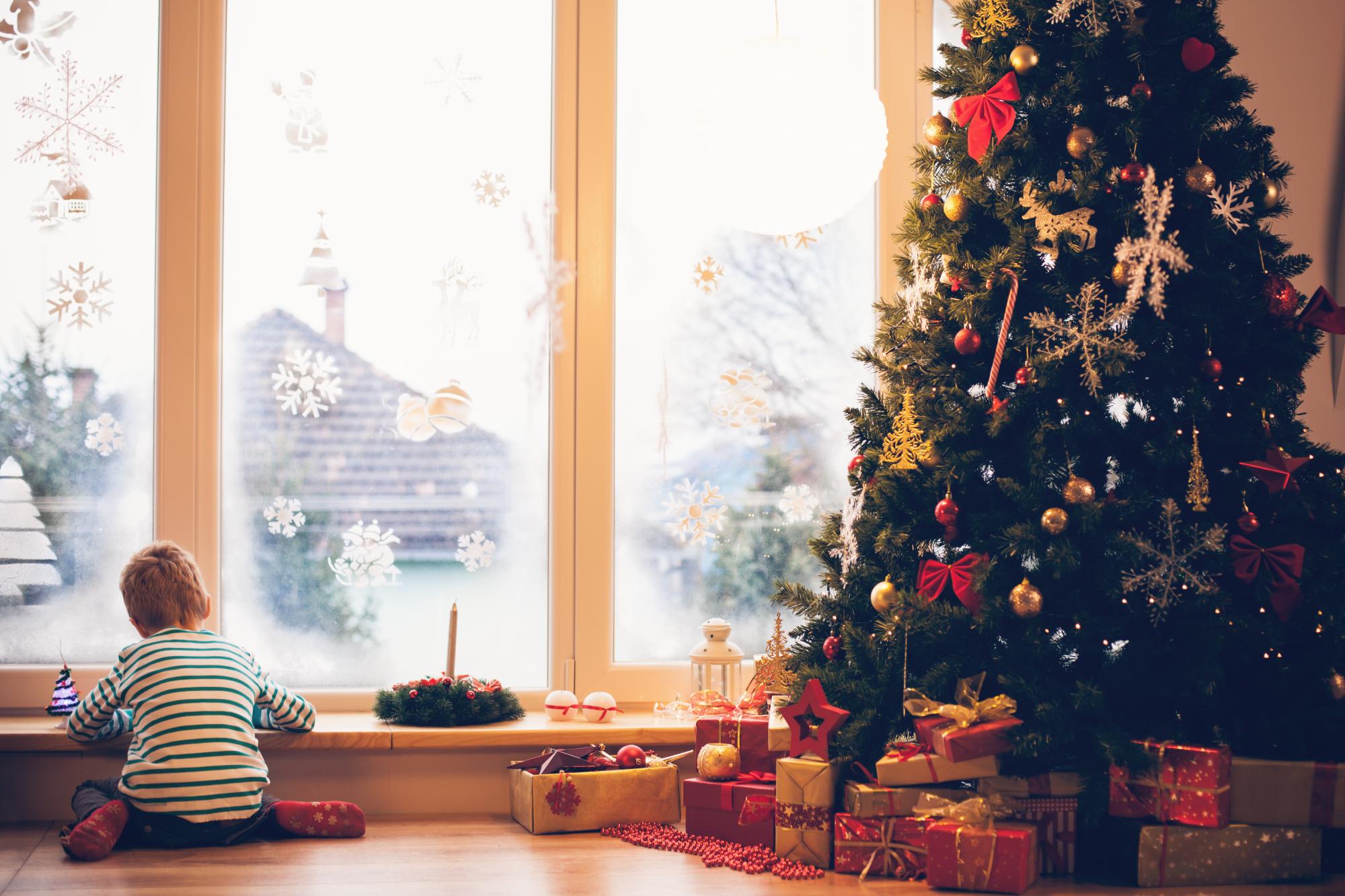
Cultivating a Sustainable Holiday Season
This list is long because there are SO MANY fun, creative, and even stress-reducing (yes!) ways to cultivate a sustainable holiday season. Try a few or try them all. You might even find you like them better than their less-sustainable alternatives. The holidays are a materialistic time of year – a blizzard of presents, wrapping paper, decorations, party supplies, and rich foods. While the point of it all is to create an atmosphere of celebration, the reality is that it often leaves us stressed out and sorting through the debris come January. In fact, we throw away 25 per cent more trash during the holiday season, but it doesn’t have to be that way.



Know the rules of holiday recycling.
A surprising number of things that seem recyclable are not, including wrapping paper and holiday cards with glitter, metallic coatings (so, shiny stuff), photo-paper, or glue. Tissue paper and ribbons of all kinds are not recyclable and neither are most gift bags. Check out this article for more specifics on how to master holiday recycling, and read on for ways to reduce your reliance on disposable holiday supplies in the first place.Send an e-card.
True, you can’t display it on the mantle and it might not work for Great Aunt Suzy who never checks her email. But for some (or all) of your family, an e-card is a great way to share pictures of your family and annual updates without generating waste. It’s also an affordable option. Sites like Canva, Punchbowl, and Smilebox offer free or low-cost templates for you to easily create and share your holiday greetings, digitally.Choose recyclable or reusable packaging.
Each year we throw away over 4 million pounds of wrapping paper (and trimmings) alone. You can create a more sustainable holiday season by wrapping presents in easily recyclable papers like butcher paper, paper bags, or newsprint. Because some of these options lack that holiday magic we’re going for when we reach for the rolls of sparkly paper and brightly colored ribbon, I prefer to use fabric. Based on the Japanese tradition of furoshiki, my present-wrapping tradition goes like this: I collect fabrics and scarves with beautiful prints and saturated colors from thrift stores, use them to wrap presents I will exchange in-person, then take them back after they unwrap. Like the canvas tote bag of gifts, furoshiki are simply a carrier, not part of the gift itself, though they can be that, too. I love my fabrics too much to give them away, so taking them back to use again punctuates their purpose as a reusable wrapping. My family has become so used to my tradition that many of them wrap their presents in cloth now, too. This book offers lots of inspiration from simple to intricate wrapping styles, and this blog gives you a basic how-to.
Reduce Your Environmental Impact
Many of our holiday choices have direct environmental impacts. A sustainable holiday season puts reducing environmental impact over convenience or tradition, but it doesn’t mean a less beautiful (or delicious) holiday season.Stock up at your local farmers market or farm stand.
If you’re lucky enough to have a winter farmers market in your community, go there! Frost-kissed vegetables like kale, carrots, and beets are sweeter and more flavorful than their summer counterparts. Food grown in your area travels less, costing fewer carbon emissions and keeping your dollars in the local economy. Since winter farmers markets are usually fewer and farther between, be sure to buy extra – those root vegetables and hardy greens will keep for weeks in the fridge.Vegetable focused holiday meals.
Whatever your feelings are about eating meat, the fact is, animal-based foods are environmentally taxing. Livestock farming is responsible for 14.5 per cent of global greenhouse gas emissions and is a major cause of deforestation and inefficient land use. This holiday season, give yourself the tasty challenge of making vegetables the main attraction of your holiday meal. It’s easier – and tastier – than you may think. (Need inspiration? Try here, here, and here.)Decorate with Compostables.
The Christmas tree dilemma is real. While live Christmas trees can pose some environmental dilemmas (chemical sprays and fertilizers, long transportation chains, the very nature of cutting down a living, air-filtering tree), fake trees are not the answer. They are made of plastic and while you may get a good 10 years of use out of them, they ultimately end up in the waste stream (possibly the ocean). If you do choose a live tree, know that your purchase is preserving farmland, supporting a living forest (trees grow 5 or 6 years before harvest), and that each tree you buy symbolizes another tree planted. Complete the sustainable cycle by composting your tree when the holidays are over (local organizations like boy scout troops will often collect trees for shredding at a nominal fee). Tree alternatives include: a garland decorated with ornaments, a potted tree that you plant the next summer, or a potted house plant that can handle some lights and ornaments. Check out this list of other great ideas for how to transform your home into a holiday wonderland with compostable decorations. Like holiday lights? Try LED and turn them off while you're sleeping to reduce their energy consumption.
Sustainable Holiday Season Gift Ideas
The tradition of gift giving doesn’t have to be synonymous with consumerism.Buy or make them something that will get used up.
Seeds for the garden, locally made food items like preserves or sweets, soaps & body care products, or candles.Give them something that doesn’t produce any waste.
An IOU for mowing the lawn or cleaning the windows, tickets to the movies or a local play, gift certificates to a restaurant, a fancy grocery store, or for a fun class (think: art, instruments, cooking, yoga, and much more). Consider donating to a charity in someone’s honor.Buy gifts with your values.
When you do want to give a “thing,” you have the option to choose gifts that represent sustainable values: a reusable water bottle or coffee thermos, a canvas tote bag (perhaps filled with farmers market tokens), a house plant, clothes made from organic fibers (cotton, hemp, wool, bamboo) or recycled materials, used books, solar powered gadgets, or finds from the local thrift or vintage store. Want to go a step farther? You can respectfully request for your family and friends to refrain from buying you a material gift. If they wish to give you a present, offer suggestions for charities or experiences you enjoy.
Nurture Your Community
A sustainable holiday season means more than just curbing waste or your carbon footprint. Ultimately, the holidays are about gathering with family and friends in the spirit of love and generosity. Sustainability relies on the actions of a community as much as the actions of individuals.Give more experiences and fewer things.
One year when I was growing up, my mom declared that she and my dad would no longer buy my siblings and I heaps of gifts. Instead, we would celebrate something she called Family Days. Each member of the family was to select a day during Christmas break and decide on an activity for the five of us to do together – go to the indoor waterpark, to a movie and dinner, to a museum or a play or the arcade. It was that person’s choice, and while there were budget limitations, they didn’t get in the way of our creativity. Each year we not only had five solid days of family time, we got to know one another better through the places we brought each other. Family Days was also marked by giving one gift to each family member on our own day. Choosing one gift meant thinking of something special for each person, and having a day of pure giving (not receiving) on the day of my activity. I remember the anticipation, not only of bringing my whole family on an adventure of my choice, but giving them each something I felt was truly special. There were always plenty of presents to open on Christmas, but the Family Day gift exchanges felt more satisfying, both as a giver and a receiver. I’m not suggesting that Family Days makes sense for everyone, just that you consider the sustainable values behind it: that it is memories, not toys or sweaters or gadgets, that end up lasting a lifetime.Do something for your community.
Volunteer, gather people, wander through the streets and sing together, exchange cookies with your neighbor, give to local non-profits doing work you believe in, buy a gift for a child in need or food for a low-income family. Find out what’s going on in your neighborhood and attend an event you’ve never gone to before. Meet someone new. Say hello. Say thank you. Community is about interaction and generosity - go out there and be a part of it.Would you like to be the first to hear about our new products and more? Sign up for our Nature’s Path Newsletter.

